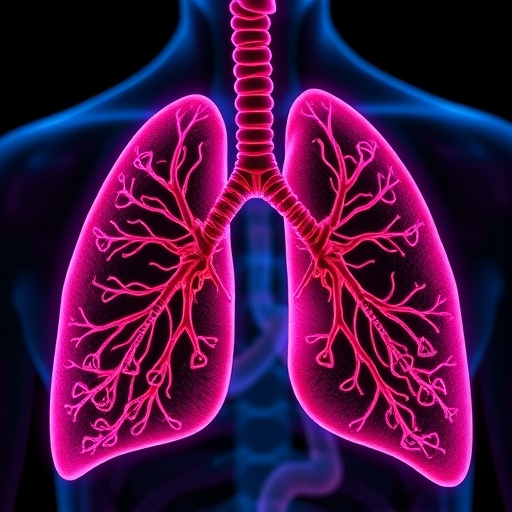In 2015, the International Agency for Research on Cancer (IARC) published a series of monographs on the evaluation of various carcinogenic risks. In a monograph on air pollution, the organization pointed out the difficulty of assessing the effects of pollution on multiple types of cancers, given their different etiologies, risk factors and variability in the composition of air pollutants in space and time. However, the IARC identified certain key components of air pollution, including particulates.
How the Study Was Conducted: Thach, Thomas and colleagues enrolled 66,280 people who were age 65 or older when initially recruited between 1998 and 2001. The researchers did not have data on whether they had cancer before they were enrolled. Researchers followed the study subjects until 2011, ascertaining causes of death from Hong Kong registrations. Annual concentrations of ambient fine particulate matter, or matter with an aerodynamic diameter of less than 2.5 micrometers (PM2.5), at their homes were estimated using data from satellite data and fixed-site monitors. Researchers adjusted for smoking status and excluded deaths that had occurred within three years of the baseline to control for competing diseases.
Results: The study showed that for every 10 microgram per cubic meter (µg/m3) of increased exposure to PM2.5, the risk of dying from any cancer rose by 22 percent. Increases of 10 µg/m3 of PM2.5 were associated with a 42 percent increased risk of mortality from cancer in the upper digestive tract and a 35 percent increased risk of mortality from accessory digestive organs, which include the liver, bile ducts, gall bladder, and pancreas.
For women, every 10 µg/m3 increase in exposure to PM2.5 was associated with an 80 percent increased risk of mortality from breast cancer, and men experienced a 36 percent increased risk of dying of lung cancer for every 10 µg/m3 increased exposure to PM2.5.
Author Comment: Thach and Thomas indicated possible explanations for the association between PM2.5 and cancer could include defects in DNA repair function, alterations in the body's immune response, or inflammation that triggers angiogenesis, the growth of new blood vessels that allows tumors to spread. In the case of the digestive organs, heavy metal pollution could affect gut microbiata and influence the development of cancer, the authors added.
While further research would be required to determine whether other countries experience similar associations between PM2.5 and cancer deaths, Thomas said this study, combined with existing research, suggests that other urban populations may carry the same risks.
"The implications for other similar cities around the world are that PM2.5 must be reduced as much and as fast as possible," he said. "Air pollution remains a clear, modifiable public health concern."
The authors added that the large scale of their study, as well as its documentation of cancer-specific mortality, adds to the IARC's report on the contribution of particulate matter to various cancers.
Study Limitations: Thach said a limitation of the study is that it focused solely on PM2.5. He said emerging research is beginning to study the effects of exposure to multiple pollutants on human health. He also cautioned that pollution is just one risk factor for cancer, and others, such as diet and exercise, may be more significant and more modifiable risk factors.
###
Funding & Disclosures: This study was funded by the Wellcome Trust. Thach and Thomas declare no conflicts of interest.
To interview Thuan Quoc Thach or G. Neil Thomas, contact Julia Gunther at [email protected] or 215-446-6896.
Bottom Line: Long-term exposure to ambient fine particulate matter, a mixture of environmental pollutants, was associated with increased risk of mortality for many types of cancer in an elderly Hong Kong population
Journal in Which the Study was Published: Cancer Epidemiology, Biomarkers & Prevention, a journal of the American Association for Cancer Research.
Co-lead Authors: Thuan Quoc Thach, PhD, a scientific officer at the School of Public Health at the University of Hong Kong, and G. Neil Thomas, MPhil, PhD, a reader in epidemiology in the Department of Public Health, Epidemiology and Biostatistics in the Institute of Applied Health of the College of Medical and Dental Sciences at The University of Birmingham.
Background: "Long-term exposure to particulate matter has been associated with mortality mainly from cardiopulmonary causes and lung cancer, but there have been few studies showing an association with mortality from other cancers," said Thach, adding that he and Thomas suspected that particulates might have a similar effect on other types of cancer.
Follow us: Cancer Research Catalyst http://blog.aacr.org; Twitter @AACR; and Facebook http://www.facebook.com/aacr.org
About the American Association for Cancer Research
Founded in 1907, the American Association for Cancer Research (AACR) is the world's first and largest professional organization dedicated to advancing cancer research and its mission to prevent and cure cancer. AACR membership includes more than 35,000 laboratory, translational, and clinical researchers; population scientists; other health care professionals; and patient advocates residing in 104 countries. The AACR marshals the full spectrum of expertise of the cancer community to accelerate progress in the prevention, biology, diagnosis, and treatment of cancer by annually convening more than 30 conferences and educational workshops, the largest of which is the AACR Annual Meeting with almost 19,300 attendees. In addition, the AACR publishes eight prestigious, peer-reviewed scientific journals and a magazine for cancer survivors, patients, and their caregivers. The AACR funds meritorious research directly as well as in cooperation with numerous cancer organizations. As the Scientific Partner of Stand Up To Cancer, the AACR provides expert peer review, grants administration, and scientific oversight of team science and individual investigator grants in cancer research that have the potential for near-term patient benefit. The AACR actively communicates with legislators and other policymakers about the value of cancer research and related biomedical science in saving lives from cancer. For more information about the AACR, visit http://www.AACR.org.
Media Contact
Lauren Riley
[email protected]
215-446-7155
@aacr
The post Exposure to particulate air pollutants associated with numerous types of cancer appeared first on Scienmag.




